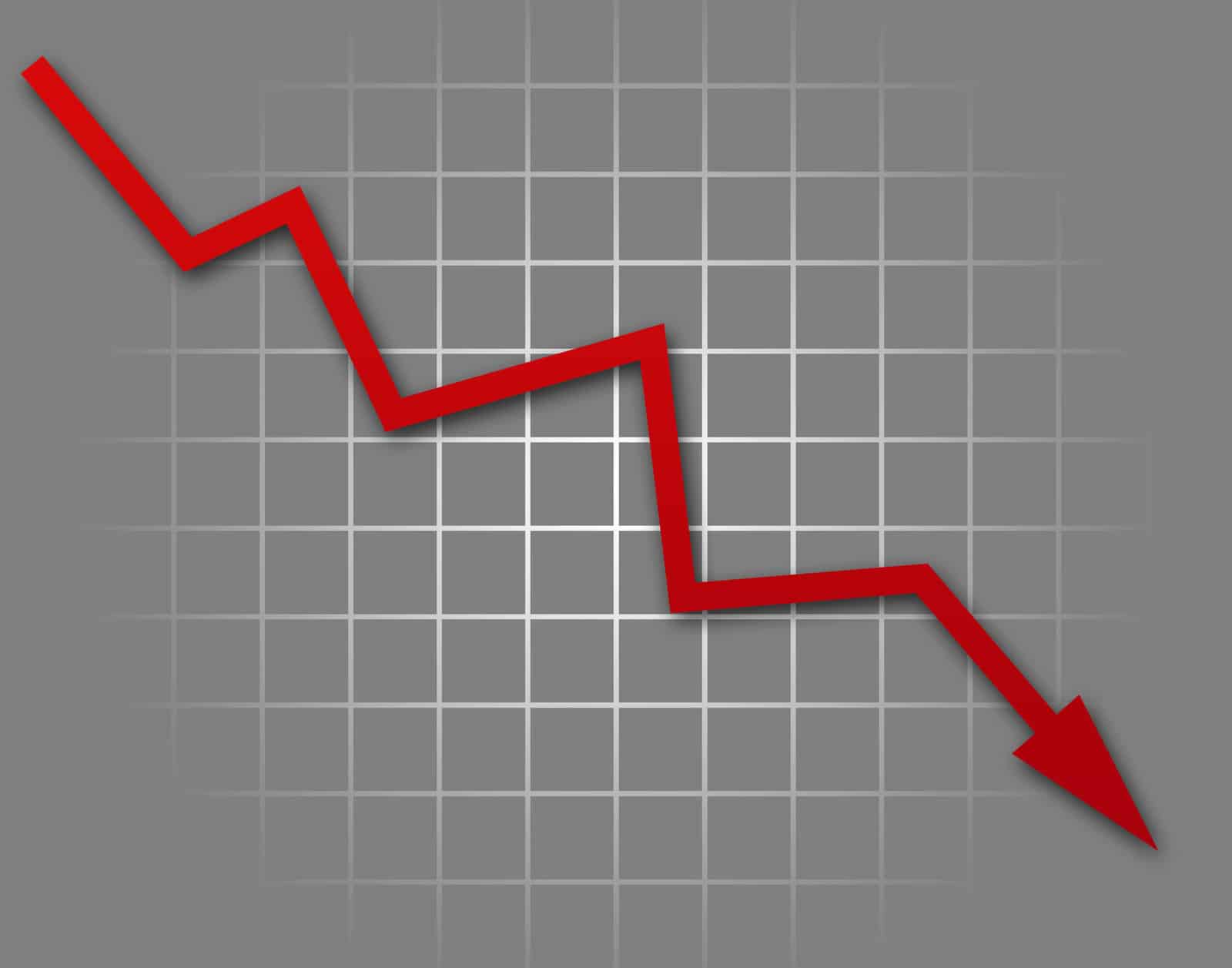

Finance
When Do Stocks Bottom In A Recession
Published: January 19, 2024
Discover when stocks bottom during a recession and gain valuable insights on finance strategies to navigate through challenging market conditions.
(Many of the links in this article redirect to a specific reviewed product. Your purchase of these products through affiliate links helps to generate commission for LiveWell, at no extra cost. Learn more)
Table of Contents
Introduction
When a recession hits, stock markets tend to experience significant volatility and downturns. Investors often find themselves uncertain and anxious about when the market will reach its bottom, signaling a potential turning point and offering opportunities for profitable investments. Understanding the timing and factors involved in stock market bottoms during a recession is crucial for both experienced and novice investors.
Stock market bottoms refer to the point in a market downturn when prices hit their lowest level before starting to recover. Identifying the bottom can be challenging, as it depends on various economic indicators, historical patterns, and investor psychology.
During a recession, economic indicators play a vital role in determining when stocks are reaching their bottom. Unemployment rates, GDP growth, consumer spending habits, and corporate earnings are among the key indicators that investors closely monitor. These indicators offer insights into the overall health of the economy and can provide clues about the potential timing of a market bottom.
Historical patterns and cycles also offer guidance in identifying stock market bottoms. Recessionary periods often follow a similar pattern, with markets experiencing a decline followed by a recovery. Studying past recessions can help investors gain a better understanding of the typical duration and depth of market bottoms.
Investor psychology is another critical factor to consider. During a recession, fear and uncertainty often drive market sentiment, leading to exaggerated market movements. This can result in overshooting on the downside and creating opportunities for investors to capitalize on undervalued stocks.
For investors looking to take advantage of market bottoms during a recession, it is essential to devise a well-thought-out strategy. This may involve conducting thorough research, diversifying the investment portfolio, and taking a long-term perspective. Patience and discipline are key virtues during these periods, as market recoveries often take time.
In this article, we will delve deeper into the concept of stock market bottoms during a recession. We will explore the economic indicators to watch for, analyze historical patterns, discuss investor psychology, and provide strategies for investors to consider during these challenging times.
Understanding when stocks bottom in a recession can provide investors with a valuable advantage. By equipping themselves with knowledge and insights, investors can make informed decisions and potentially benefit from market recoveries. Let’s dive into the details and explore the fascinating world of stock market bottoms during a recession.
Understanding Stock Market Bottoms
Stock market bottoms are the points in a market downturn when stock prices reach their lowest levels before starting to recover. They represent a turning point where investor sentiment begins to shift from fear and panic to hope and optimism. Understanding stock market bottoms is crucial for investors as it can provide opportunities to buy undervalued assets and potentially reap substantial returns when the market eventually rebounds.
There are several key factors to consider when trying to understand stock market bottoms during a recession:
- Economic indicators: Economic indicators, such as GDP growth, unemployment rates, and consumer spending, often play a significant role in determining when a market bottom may occur. During a recession, these indicators tend to show signs of improvement leading up to a market bottom. For example, a decline in the unemployment rate and an increase in consumer spending can signal the start of a potential market recovery. Investors closely monitor these indicators to gauge the overall health of the economy and the potential timing of a market bottom.
- Market sentiment: Investor psychology and market sentiment play a crucial role in determining stock market bottoms. During a recession, fear and panic grip the markets, causing stock prices to plummet. However, as investors start to recognize the signs of a potential recovery, sentiment can shift, leading to increased buying activity. This shift in sentiment often indicates that the market may be approaching its bottom. Understanding investor psychology and monitoring market sentiment can provide valuable insights into market bottoms.
- Historical patterns: Analyzing historical market data can provide valuable insights into stock market bottoms. While every recession is unique, past market downturns often follow similar patterns. By studying historical data, investors can identify the average duration, depth, and recovery period of market bottoms. This information can help investors make more informed decisions about when to enter the market and take advantage of potential opportunities.
- Valuation metrics: Valuation metrics, such as price-to-earnings ratio (P/E ratio) and price-to-book ratio (P/B ratio), can provide insights into whether stocks are overvalued or undervalued. During a recession, stock prices often decline significantly, which can create attractive buying opportunities for investors. By analyzing valuation metrics, investors can identify stocks that are trading at a discount to their intrinsic value, indicating a potential market bottom.
It is important to note that identifying a stock market bottom with precision is challenging. Market bottoms are often only confirmed in hindsight, as it requires sustained upward movement and recovery for an extended period. Timing the market bottom perfectly is nearly impossible, even for seasoned investors. Therefore, it is crucial to approach investments during a potential market bottom with a long-term perspective and a well-diversified portfolio.
By understanding the various factors that contribute to stock market bottoms during a recession, investors can gain valuable insights into the timing and potential opportunities for investment. Staying informed, monitoring economic indicators, analyzing market sentiment, and studying historical patterns can help investors make more informed decisions and potentially benefit from the eventual market recovery.
Economic Indicators to Watch For
During a recession, monitoring key economic indicators is crucial for determining when stock market bottoms may occur. These indicators provide insight into the overall health of the economy and offer clues about the potential timing of a market recovery. Here are some important economic indicators to watch for:
- Gross Domestic Product (GDP) Growth: GDP growth is a key measure of economic activity. During a recession, GDP typically contracts, indicating a slowdown in economic output. Investors should monitor GDP growth rates, as a positive or improving growth rate could signal the possibility of a market bottom.
- Unemployment Rate: The unemployment rate is a critical indicator of labor market conditions. During a recession, unemployment rates generally rise as businesses reduce their workforce. A declining unemployment rate or signs of stabilization may suggest that the economy is on a path to recovery.
- Consumer Spending: Consumer spending accounts for a significant portion of economic activity. During a recession, consumer spending tends to decrease as individuals tighten their budgets. Investors should closely monitor changes in consumer spending habits, as an increase in spending can indicate improving market conditions.
- Corporate Earnings: Corporate earnings are a key driver of stock market performance. During a recession, companies may experience a decline in earnings due to reduced consumer demand and weaker economic conditions. Investors should pay attention to corporate earnings reports to gauge the health of individual companies and industries, as improving earnings can be a sign of a potential market bottom.
- Interest Rates: Central banks play a crucial role in managing the economy during a recession. Lowering interest rates can stimulate borrowing and spending, potentially leading to a market recovery. Investors should closely follow central bank announcements and changes in interest rates as they can impact market sentiment and provide signals about the potential timing of a market bottom.
It is essential to note that economic indicators should be analyzed in conjunction with other factors to gain a comprehensive understanding of market bottoms. These indicators are not foolproof and can sometimes provide conflicting signals. Additionally, market bottoms are often only confirmed in hindsight. However, monitoring economic indicators can help investors assess the overall health of the economy and make more informed decisions about potential market bottoms.
Investors should also be aware that market reactions to economic indicators can vary. Markets often anticipate economic trends, causing stock prices to react even before official data is released. Therefore, it is essential to stay informed and closely follow economic news and indicators to understand market dynamics during a recession.
By monitoring economic indicators, investors can have a better grasp of the overall economic landscape and the potential timing of market bottoms. It is important to combine this knowledge with other factors such as market sentiment, historical patterns, and valuation metrics to make well-informed investment decisions during a recession.
Historical Patterns and Cycles
Historical patterns and cycles in the stock market can provide valuable insights into the timing and behavior of market bottoms during a recession. While every recession is unique, studying past market downturns can help investors gain a better understanding of the typical duration, depth, and recovery patterns. Here are some key points to consider when examining historical patterns and cycles:
- Duration of Market Bottoms: Historical data shows that market bottoms during a recession can vary significantly in terms of duration. Some market bottoms may be short-lived, lasting only a few weeks, while others can persist for several months or even years. Understanding the average duration of past market bottoms can give investors a general idea of how long a downturn may last.
- Depth of Market Bottoms: The depth of market bottoms refers to the magnitude of the decline in stock prices before reaching the lowest point. Historical data reveals that the depth of market bottoms can vary widely depending on the severity and characteristics of the recession. Analyzing the depth of past market bottoms can help investors assess the potential downside risk during a current downturn.
- Recovery Period: While market bottoms mark the lowest point of a downturn, the recovery period is the subsequent phase when stock prices begin to rebound. Historical data suggests that the recovery period can vary in duration and intensity. Some recoveries may be relatively swift, with stock prices quickly rebounding to pre-recession levels, while others may experience a more prolonged and gradual recovery. Analyzing historical recovery patterns can provide insights into the potential timing and pace of a market recovery.
- Historical Market Return: Examining historical market returns during previous recessions can help investors gauge the potential returns and risks associated with investing during a market bottom. While past performance does not guarantee future results, historical market returns can provide a reference point for understanding the range of potential outcomes.
It is important to note that historical patterns and cycles may not perfectly repeat themselves in every recession. Each economic downturn is influenced by unique factors, making it essential to consider the specific context of the current recession. Nonetheless, studying historical patterns can help investors gain a broader perspective and make more informed investment decisions during a recession.
When analyzing historical patterns and cycles, it is beneficial to refer to reputable sources and consult financial experts who have experience in navigating market downturns. By combining historical insights with other factors such as economic indicators, investor psychology, and valuation metrics, investors can develop a well-rounded understanding of market bottoms during a recession.
Remember, investing during a market bottom requires careful consideration and a long-term perspective. Historically, market recoveries have shown resilience, offering opportunities for investors to capitalize on undervalued assets. However, it is crucial to exercise patience, diversify portfolios, and consider individual risk tolerance and financial goals when making investment decisions.
Investor Psychology During a Recession
Investor psychology plays a significant role in driving market movements during a recession. Fear, uncertainty, and herd mentality can cause exaggerated market reactions and create opportunities for savvy investors. Understanding investor psychology during a recession can provide valuable insights into market bottoms and help investors make informed decisions. Here are some key points to consider:
- Fear and Panic: During a recession, fear and panic often grip the markets as investors worry about economic uncertainty and the potential for further declines in stock prices. This fear can lead to irrational decision-making, with investors selling off their investments in a panic. It is crucial to recognize that fear-driven selling can contribute to market volatility and create potential buying opportunities for investors.
- Herd Mentality: Investor behavior during a recession is often influenced by herd mentality, where individuals follow the actions of the majority rather than relying on their own analysis. This herding behavior can lead to exaggerated market movements and create opportunities for contrarian investors who are willing to go against the crowd. By maintaining a rational and independent approach, investors can potentially identify undervalued assets that the market may be overlooking.
- Overreacting to News: News headlines and economic indicators can significantly impact investor psychology. Investors may overreact to negative news, leading to an accelerated decline in stock prices. It is important to critically analyze and interpret news rather than making impulsive investment decisions based solely on headlines. By maintaining a long-term perspective and focusing on the fundamental strength of the underlying assets, investors can navigate the emotional roller coaster of a recession more effectively.
- Opportunities for Value Investing: During a recession, market sentiment can cause stock prices to become disconnected from their underlying value. This presents opportunities for value investors who seek out undervalued companies with solid fundamentals. By taking a contrarian approach and conducting thorough research, investors can identify potential bargains in the market and position themselves for potential future growth.
- Patience and Discipline: Patience and discipline are key virtues during a recession. It is crucial for investors to resist the impulse to time the market perfectly and instead focus on the long-term prospects of their investments. Market bottoms can be followed by prolonged periods of recovery, and it may take time for investments to realize their full potential. By maintaining discipline and sticking to their investment strategy, investors can avoid making impulsive decisions based on short-term market fluctuations.
Understanding investor psychology during a recession allows investors to separate emotions from rational decision-making. By recognizing the impact of fear, herd mentality, and overreacting to news, investors can position themselves to take advantage of potential buying opportunities and make informed investment decisions.
It is important to note that every investor is unique, and risk tolerance varies. It is crucial for investors to evaluate their own financial goals, risk tolerance, and investment horizon before making any investment decisions. Consulting with a financial advisor can provide personalized guidance based on an individual’s specific circumstances.
By maintaining a calm and rational approach, investors can navigate the challenges of a recession and potentially benefit from market recoveries when they occur. Successful investing during a recession often requires a strong understanding of investor psychology, a disciplined strategy, and a focus on long-term objectives.
Strategies for Investors During a Market Bottom
Investing during a market bottom can be both challenging and rewarding. It requires careful analysis, a long-term perspective, and the ability to take advantage of potential opportunities. Here are some strategies for investors to consider during a market bottom:
- Thorough Research: Conducting thorough research is essential before making any investment decision, especially during a market bottom. Analyze the fundamentals of the companies or assets you are considering investing in. Look for companies with strong balance sheets, sustainable business models, and the ability to weather economic downturns. Solid research can help identify undervalued assets that have the potential for future growth.
- Diversify Your Portfolio: Diversification is crucial during a market bottom as it helps spread risk and increases the chances of capturing potential gains. Consider investing in a variety of asset classes, sectors, and geographic regions to mitigate the impact of any individual investment. Diversification can help safeguard against extreme market movements and provide a more stable portfolio during turbulent times.
- Value Investing: During a market bottom, value investing can be a viable strategy. Look for stocks that are trading at a discount to their intrinsic value. Undervalued companies with strong fundamentals and solid long-term prospects have the potential to generate attractive returns as the market recovers. However, ensure that the identified value stocks align with your investment objectives and risk tolerance.
- Long-Term Perspective: Investing during a market bottom requires a long-term perspective. Market recoveries can take time, and short-term volatility is common. Avoid making impulsive decisions based on short-term market movements. Stick to your investment plan and focus on the long-term potential of your investments. Remember, the stock market has historically shown resilience and the ability to bounce back from downturns.
- Staggered Investing: Rather than investing a lump sum of money at once, consider staggering your investments over a period of time. This approach, known as dollar-cost averaging, helps reduce the risk of investing at the wrong time. By consistently investing a fixed amount at regular intervals, you can potentially benefit from both market downturns and upswings, while mitigating the impact of short-term volatility.
- Manage Risk: Proper risk management is crucial during a market bottom. Determine your risk tolerance and ensure that your investment decisions align with your comfort level. It may be wise to reassess your portfolio and make any necessary adjustments to align with your risk profile. Regularly review and rebalance your portfolio to ensure it remains diversified and aligned with your investment goals.
It is important to remember that no strategy can guarantee success, and investing always carries risks. The strategies mentioned above are general guidelines and may not be suitable for everyone. It is recommended to consult with a financial advisor who can provide personalized advice based on your individual circumstances and goals.
Finally, keep in mind that investing during a market bottom requires patience and discipline. Market recoveries can take time, and there may be further volatility along the way. Stay informed, maintain a rational approach, and focus on long-term growth objectives. By adopting a strategic and patient mindset, investors can position themselves to potentially benefit from market recoveries following a market bottom.
Conclusion
Understanding stock market bottoms during a recession is crucial for investors looking to capitalize on potential opportunities. While predicting the exact timing of a market bottom is challenging, analyzing economic indicators, historical patterns, and investor psychology can provide valuable insights. By combining these factors with well-informed strategies, investors can navigate market downturns more effectively.
Economic indicators such as GDP growth, unemployment rates, consumer spending, and corporate earnings play a vital role in determining when a market bottom may occur. Monitoring these indicators can offer insights into the overall health of the economy and the potential timing of a market recovery.
Studying historical patterns and cycles can help investors gain a broader perspective on the duration, depth, and recovery periods of market bottoms. Analyzing past market downturns can provide insights into potential outcomes and guide investment decisions.
Investor psychology heavily influences market movements during a recession. Understanding the impact of fear, herd mentality, and overreacting to news can help investors make rational investment decisions and take advantage of potential opportunities. Maintaining a long-term perspective and exercising patience and discipline are key virtues during a market bottom.
Implementing strategies such as thorough research, diversification, value investing, a long-term perspective, staggered investing, and risk management can assist investors in navigating market bottoms. These strategies provide a framework for making informed investment decisions and potentially reaping rewards when the market eventually recovers.
It is important for investors to remember that investing involves risks, and no strategy can guarantee success. Each investor has unique circumstances and risk tolerances, so consulting with a financial advisor is recommended to tailor strategies to individual needs.
By incorporating a comprehensive understanding of stock market bottoms during a recession into their investment approach, investors can position themselves to potentially benefit from market recoveries and achieve their long-term financial goals.













